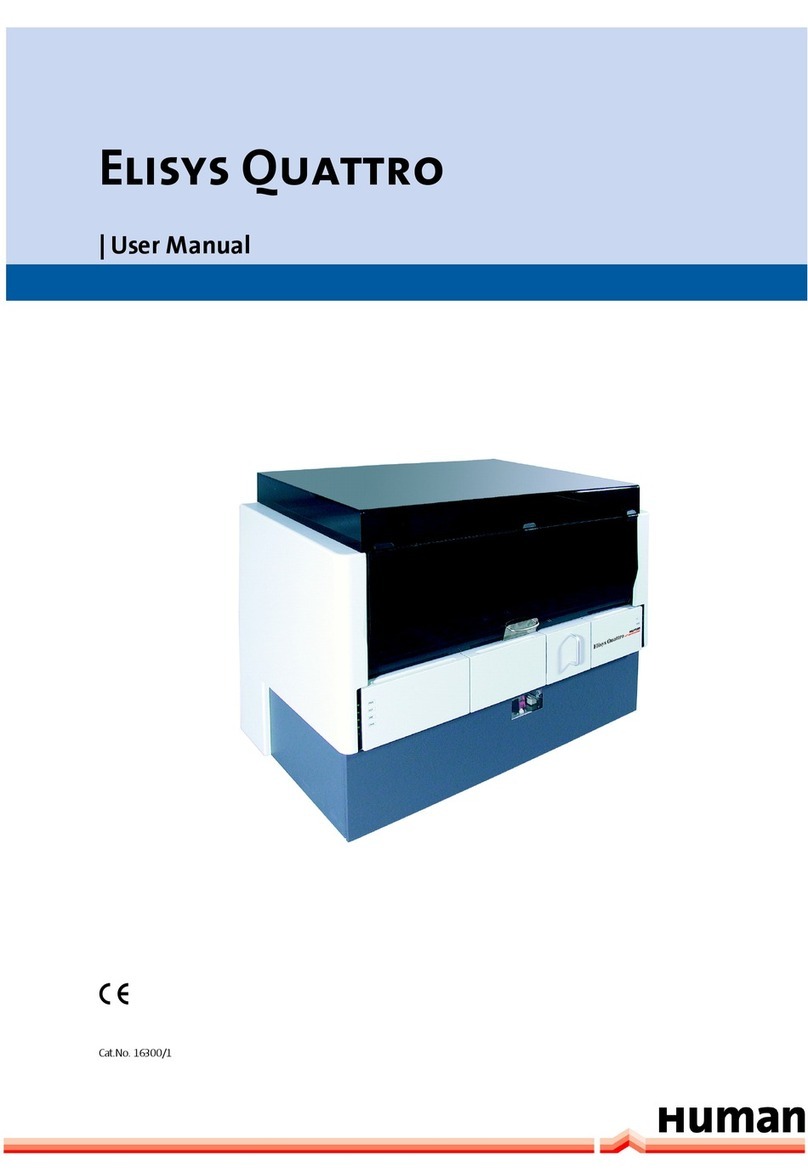Table of Contents
HumaFIA | User manual
Table of Contents
HumaFIA..........................................................................................................................................................3
Table of Contents ............................................................................................................................................5
1 SAFETY INSTRUCTIONS............................................................................................................................9
1.1 Introduction............................................................................................................................................9
1.2 User warranty........................................................................................................................................9
1.3 Use of the instrument ............................................................................................................................9
1.4 General safety warnings........................................................................................................................9
1.5 Disposal management concept...........................................................................................................10
1.6 Biohazard warning...............................................................................................................................10
1.7 Instrument disinfection.........................................................................................................................10
2 SYSTEM DESCRIPTION ...........................................................................................................................11
2.1 Intended purpose.................................................................................................................................11
2.2 Instrument structure.............................................................................................................................11
2.2.1 HumaFIA instrument ....................................................................................................................11
2.2.2 HumaFIA power supply................................................................................................................11
2.2.3 HumaFIA calibration card.............................................................................................................12
2.2.4 HumaFIA power bank...................................................................................................................12
2.2.5 HumaFIA test cartridges...............................................................................................................12
2.2.6 HumaFIA data cable.....................................................................................................................13
2.2.7 HumaFIA Standard Cartridge.......................................................................................................14
2.3 Technical data.....................................................................................................................................14
2.4 Method: time-resolved fluorescent immunoassay...............................................................................15
2.4.1 Fluorescent immunoassay lateral flow cartridge..........................................................................15
2.4.2 The time-resolved technology of HumaFIA..................................................................................15
2.5 Installation ...........................................................................................................................................16
2.5.1 Turning the instrument ON...........................................................................................................17
2.5.2 Turning the instrument OFF .........................................................................................................17
2.6 Software user interface........................................................................................................................18
2.6.1 User interface...............................................................................................................................18
2.6.2 Menu tree.....................................................................................................................................19
3 ROUTINE UTILIZATION AND MEASUREMENT.......................................................................................21
3.1 Instrument operation and sample preparation.....................................................................................21
3.1.1 Specimen .....................................................................................................................................21
3.1.2 Procedure.....................................................................................................................................21
3.1.3 Calibration....................................................................................................................................22
3.1.4 Calculation of results....................................................................................................................22
3.1.5 Quality control ..............................................................................................................................22
3.1.6 Reference value...........................................................................................................................22






























